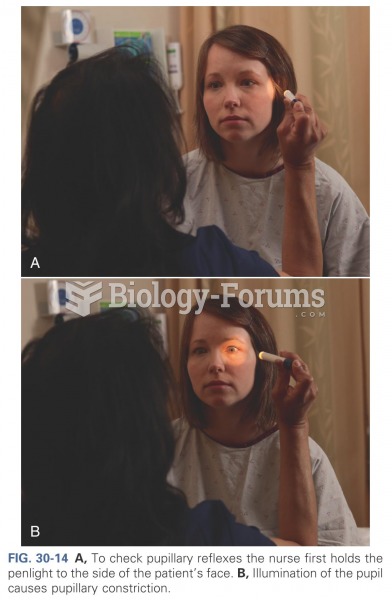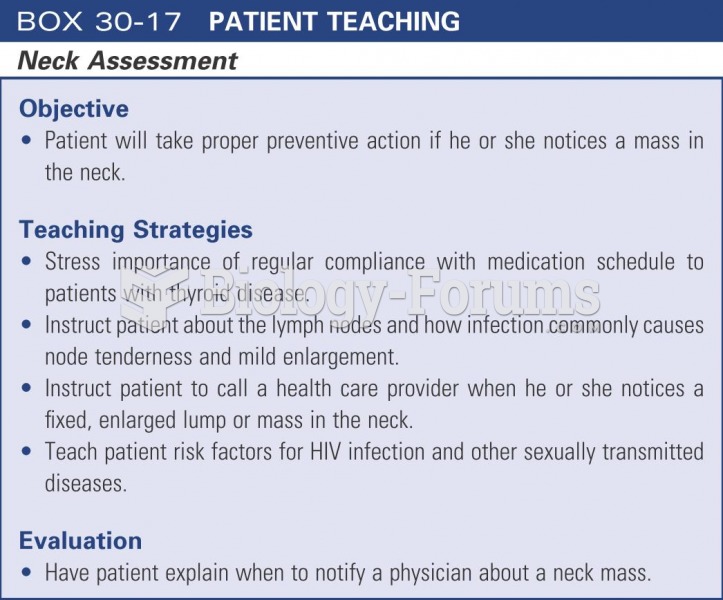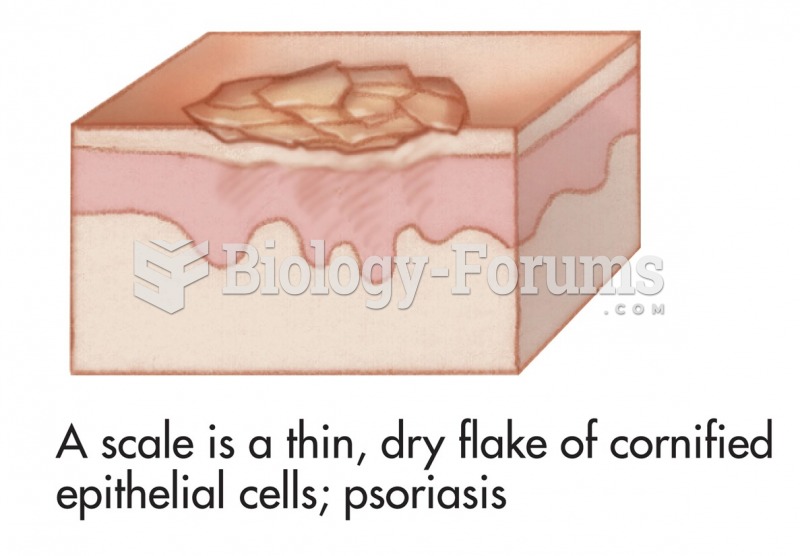Answer to Question 1
Correct Answer: 3
Rationale 1: Green nasal drainage suggests a sinus infection.
Rationale 2: Fever is a sign of infection. Productive cough also suggests infection.
Rationale 3: Coughing, sneezing, and watery eyes are classic signs of allergic rhinitis.
Rationale 4: Frontal headache and pressure along both sides of the nose suggest the sinuses are very congested and possibly infected.
Global Rationale: Sometimes called hay fever, the symptoms of allergic rhinitis resemble those of the common cold and include tearing, burning, red, swollen, or itching eyes; sneezing; nasal itching or congestion; postnasal drip; cough; and scratchy throat. In addition to the acute symptoms, complications of allergic rhinitis may include loss of taste or smell, sinusitis, hoarseness, and plugged ears. Some people may not obtain restful sleep and awaken very fatigued. Green nasal drainage and fever are signs of infection, as is a productive cough. Frontal headache and pressure along both sides of the nose suggest the sinuses are very congested and possibly infected.
Answer to Question 2
Correct Answer: 1
Rationale 1: Drugs that activate beta 2-adrenergic receptors cause bronchiolar smooth muscle to relax.
Rationale 2: Drugs that activate beta 2-adrenergic receptors result in airway diameter increasing.
Rationale 3: Drugs that activate beta 2-adrenergic receptors increase airway diameter resulting in increased ease of breathing.
Rationale 4: Drugs that activate beta 2-adrenergic receptors do not affect the production of viscous secretions.
Global Rationale: Beta2-adrenergic agonists are used to relieve and prevent the bronchospasm that is a characteristic pathophysiological feature of asthma. Airway diameter is increased, decreasing work of breathing. Viscosity of secretions is not affected.







